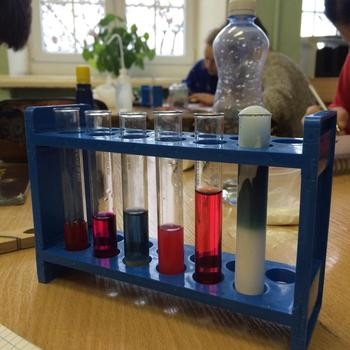Question #80ad3
2 Answers
Explanation:
Potassium Nitrate
Those two compounds are called potassium nitrate and silver chloride.
Explanation:
You're dealing with two ionic compounds, the only difference between them being the fact that one is soluble in aqueous solution and the other one is insoluble.
More specifically, potassium nitrate,
On the other hand, silver chloride,
Silve chloride will actually precipitate out of solution if the right concentrations of silver cations and chloride anions are added together.
In fact, you can get these two products by mixing silver nitrate,
The net ionic equation will be


